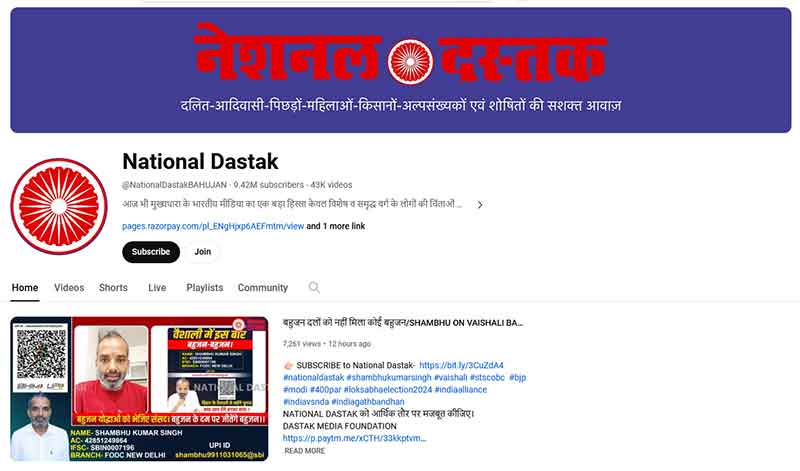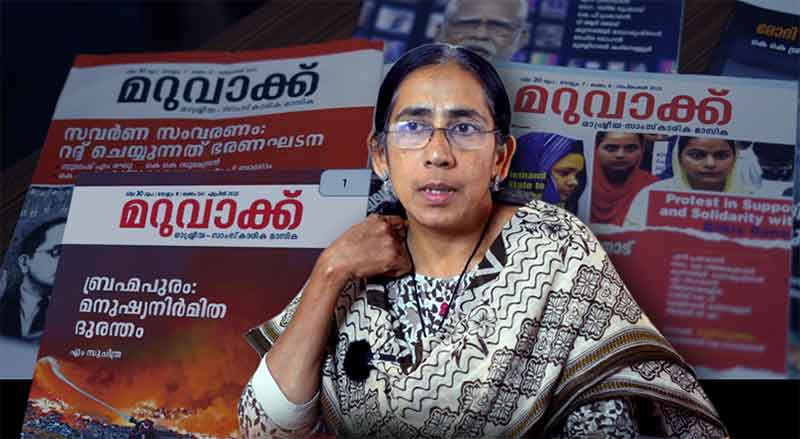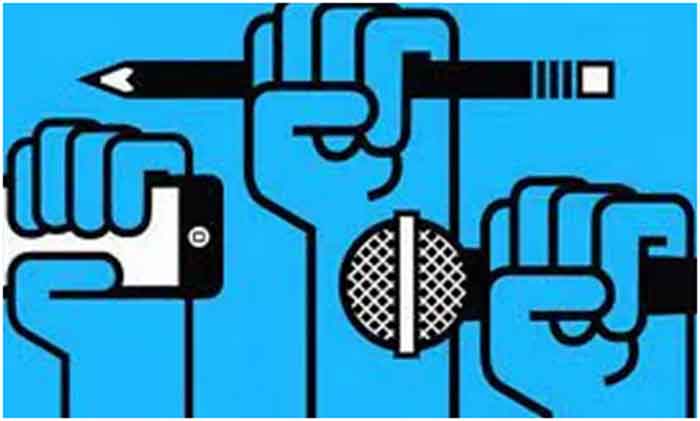
Media censorship by the Indian government has become a large issue in Kashmir, the government’s actions being unchecked in deciding what news should reach the Kashmir citizens. The freedom of the press and thus the citizens is under serious threat since the government has taken over the power to control every single news that goes out and ensure a positive narrative of the government remains intact.
Although snippets of media censorship and control can be largely seen all across India, the most recent being the Hathras rape incident of a teen Dalit girl where the actions of the police and the insensitive statements made by several leaders were protected, the situation is grave in Kashmir. There, media censorship is done entirely in the open, with the government going after any journalist trying to publish anything against the government.
In Kashmir, it is common to see journalists going to jail without any fair trial or providing any reason for their arrest. Due to this, the environment has become so hostile that the journalists live in fear. They are repeatedly summoned, intimated, and detained by the government without giving appropriate reasons. They are continuously demotivated to write about real events through several unfair practices like shutting down their offices, arresting them by accusing them of fake news without even conducting a thorough trial or investigation and taking back the advertising support which helps a newspaper run its operations.
One such event happened on October 20, 2020, when the J&K authorities sealed the Srinagar office of a prominent daily, the Kashmir Times. No appropriate reason was provided by the authorities. Kashmir Times has been the government’s target since Anuradha Bhasin, the editor of the newspaper, filed a petition in the Supreme Court to restore communication in J&K and remove the internet ban after GOI revoked the special status of J&K by the abrogation of Article 370 on August 5, 2019. This dilution of Article 370 happened in the freezing midnight with extra mobilization of troops, and stringent restrictions were put in place in the Kashmir valley to control any uprisings. This was followed by a complete ban on all communication, including the internet and even the landline.
After the petition was filed to remove the ban, the Supreme Court took five months to decide on such an important matter. Even then, it didn’t remove the restrictions in place; rather just asked the government to review the situation. The Supreme Court also declared that the government couldn’t ban the internet for prolonged periods. However, the authorities always find some reason to extend the ban, saying the restrictions are “absolutely necessary in the interest of Indian sovereignty and integrity.” As a result of this, the internet remained banned in Kashmir for seven months. Prabodh Jamwal, editor and publisher at Kashmir Times, said, “the Supreme Court declared the definition of a prolonged period to be 15 days, but then there was no clarity on whether the order could be revised every 15th day. Hence the restriction continued for long durations.” Another thing to note here is that there is only one high-speed internet provider in Kashmir – BSNL, again a government organization.
The government has repeatedly made similar attempts to suppress the right of journalists to report real events. Earlier the media houses used to engage in a self-censorship mode because there was always a fear that the government will take away the advertisement revenue from the newspaper, which is a significant source of funds for them. Since August 2019, after the abrogation of Article 370, the pattern has intensified. During the curfew, the offices of the journalists were closed, and they were forced to work from Media facilitation centers, which are small government-owned rooms from where all media houses had to operate under surveillance. 100-200 journalists shared the space, getting 15 minutes each. Clearly, the government is trying to exert a large degree of control to prevent the inside news from spreading.
They are trying to make it a communication black hole from where the inside information doesn’t get out. Several severe steps have been taken to ensure this, like putting everyone from Kashmir on a no-fly list to prevent them from going to foreign countries, arresting journalists with charging them for crimes as grave as an attempt to murder, registering false cases against journalists such as income tax fraud, labor cases, terror trials and many other creative ways.
The government also launched the New Media Policy in June 2020, which further helped it go after the reporters and publications who do not toe the state’s line. But why would one need a separate media policy for Kashmir? The answer is simple – they want even greater control over the media – the fourth pillar of a democracy. Now a government officer who is not even an expert has the absolute power to decide what goes well with India’s sovereignty and integrity and what is anti-national content.
The sad part is the government has been successful in its attempt, and very few people across the country are talking about what is happening in Kashmir. Even the people who know about the situation have chosen to put on a criminal silence, showing no resistance against the government’s increasing degree of control. Little do they know that Kashmir is just the testing laboratory, and the day is not far when this can become an issue for the whole country. It is not uncommon for the government to stop communication in several pockets of the country when they take any serious action like the passing of the Citizenship Amendment Act. Media censorship is slowly becoming an even more critical issue since many media houses have become mouthpieces of the ruling party. Independent journalists who want to speak up are suppressed by the government using the methods listed above. Soon a time can come when no one will publish anything against the government, and one will be left to wonder if they will ever see any such news in the newspapers.
Vertika Bansal is a student at IIM Ahmedabad
SIGN UP FOR COUNTERCURRENTS DAILY NEWSLETTER
















































